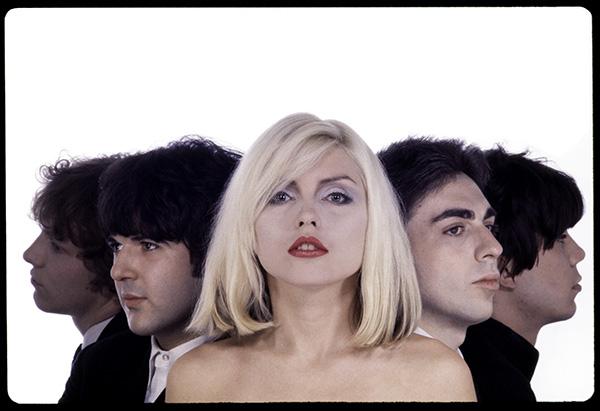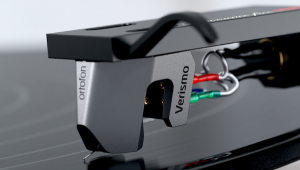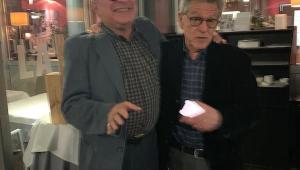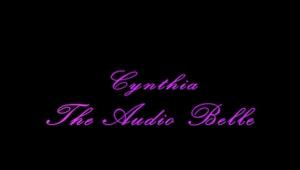In 1990 the Ramones, Tom Tom Club (with Jerry Harrison onboard) and the Debbie Harry Band joined forces for the Escape from New York Tour. I was managing a record store and go to attend a "meet & greet" with the bands at the Fox Theater in St. Louis.
The Fox has several beautiful rooms for this sort of thing, but for some reason we were consigned to a bare concrete block cubicle with folding chairs and a pile of rubble at one end. There was a cooler full of soda and a few cookies for refreshments. We knew the Ramones wouldn't be there, but Chris, Tina and Jerry from Tom Tom Club (and Talking Heads) attended along with Chris Stein from Blondie. (Blondie was on hiatus and the fill-in musicians were no match for the likes of the great Clem Burke). Despite the terrible surroundings they were all friendly and engaging, and we had a great time with them.
Then Debbie Harry walked in with an escort person from the promoter. She was wearing a skintight green body stocking, high black boots and a World War II German officer's coat. I was closest to her, so I said something stupid like "Welcome to St. Louis! Thanks for coming to see us!"
She looked at me like an entomologist examining a specimen, grabbed a soda from the cooler, turned to her escort and said "I got my Fresca. Let's get the fock outa here!"
That, my friends, is a real Rock Star Attitude. It was awesome.
BTW, Debbie's autobiography "Face It" is well worth reading. Very revealing until near the end, when it's clear she was getting tired of the project.






























































